Jess Simmons got two surprises on the first NFL Sunday last fall; one great and one not so great. His hometown team, the Jacksonville Jaguars, pulled off an upset against the Houston Texans, 29 – 7, in what one sportswriter called “the week’s most unlikely win.” The second surprise came when Simmons returned home after watching the game at a neighbor’s house. He looked out his back window to the Ortega River and found a sailboat crushed against his dock.
While the Jags had been putting a beat-down on the Texans, a strong nor’easter was lashing the entire east coast of Florida. From the Florida-Georgia border down to Ft. Lauderdale, 11 tornadoes were reported that Sunday. The wind had broken a sailboat from its mooring in the river and was banging it against his wooden dock. The boat owner called to retrieve it, but there was no way to move the boat against the force of the wind.
On the heels of the nor’easter, outer bands from Hurricane Irma barreled into Jacksonville overnight, causing flooding and high water in inland rivers. The next morning, Simmons woke to find the sailboat on top of his dock. The boat’s stern continued to smash against the dock throughout the storm, eventually tearing out the entire end.
Simmons said the boat was poorly maintained and uninsured. Homeowners’ insurance doesn’t usually cover docks, so Simmons had to pay for the repairs mostly out-of-pocket, a bill that came to $5,000.
Two doors up from Simmons, homeowner Bo Givens also had boat crash into his dock. A Daytona Beach resident had moved his 60 foot catamaran into the Ortega River thinking it would be safer from Hurricane Irma in Jacksonville. The cat ended up dragging its mooring ball and anchor onto Givens dock where it bashed the dock repeatedly all night long.
“Luckily, I had just replaced some pilings or the whole dock would’ve been ruined,” said Givens. The catamaran did $16,000 in damage to his dock. But this time, the owner was insured.
Givens’ said he’s had boats wash into his dock many times over the years, and not just during storms. And never once has law enforcement been able to do anything about it.
Up and down the Ortega River, homeowners are frustrated with laws that seem to favor irresponsible boat owners over responsible owners and private property. Figuring out what law enforcement agency can, or will, help is also unclear due to overlapping jurisdictions.
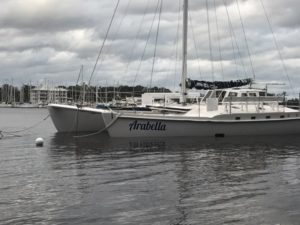
“It took forever to figure out who to call,” said Julie Mori, who lived on the south side of the river for 15 years and regularly had boats wash into her dock. Finally she called the Florida Fish and Wildlife Conservation Commission (FWC).
“They’d show up in a truck, not even a boat,” to investigate a complaint, she said. Then they’d spend days trying to contact the owner in person, while the loose boat bumped around the river unless one of the homeowners tied it off. Even in calm waters, a loose boat can cause damage to other boats, docks and bulkheads, but in a storm, it can shoot across the water like a torpedo, doing thousands of dollars of damage.
Some of the boats that ended up on Mori’s dock were “rat traps” whose owner could not be found. Then , FWC would simply drop the case, leaving her to deal with the boat.
“It blows my mind,” said homeowner Jessica Jenkins, who’s dealt with un-anchored boats in addition to noise from liveaboards. “Are we allowed to just dump our cars in the river when we no longer want them?”
Anchoring in public waterways is legal in Florida, thanks in part to heavy lobbying from the boating industry. In 2009, boating groups successfully lobbied the Florida legislature to strip local authorities from regulating their waters, according to an article in BoatU.S. Magazine. Again in 2014, BoatU.S., a boat owners association that offers insurance and towing service to its 500,000 members, and others defeated legislators’ attempts to allow local regulation. In 2016, Florida legislators were able to pass a limited pilot program to test anchoring restrictions in five regions.
In 2016, new laws also gave law enforcement more authority to head off problem boats. Prior to then, FWC was required to contact a boat owner in person, as Mori experienced. Under new law, they can send mail or an email and if there’s no response, they can take action.

Florida Statute 327.4107 now says that a vessel that “has broken loose or is in danger of breaking loose from its anchor” can be declared an “At Risk” vessel and “may not anchor on, moor on, or occupy the waters of this state.”
The protocol is that an officer will try to contact the owner of a vessel that has broken free, but if the officer “deems that the vessel poses a threat to public safety or property, they may take actions to safely secure the vessel or contact a tow company to do same,” said FWC Public Information Officer Karen Parker in an email. But she also noted that the process is “lengthy one.”
Despite the new laws, a 35 foot cabin cruiser floated free in the river for three weeks last spring before its owner showed up to claim it, said local residents. FWC responded quickly to calls about the boat, but it was up to citizens to anchor it, according to posts on NextDoor Ortega.
The Ortega River has a silty bottom which makes anchoring difficult, Sadler Point Marina owner Brooks Busey told Florida Field Notes in a 2016 interview. The section of the river between the Hwy 17/Roosevelt bridge and the Ortega River Bridge has been a popular place to anchor ever since a public marina converted to a private one resulting in the loss of 50 slips, according to a University of Florida study. In 2004, the Ortega River Boat Yard converted from a 240-slip public access marina to a 190-slip private access marina and condominium facility called The Marina at Ortega Landing. Some of the displaced boats simply moved out into the river.
Other marinas have found it hard to afford hosting liveaboards. Marinas are required to provide land facilities like parking, showers, bathrooms and pump out facilities if they allow liveaboards, said Peggy Sue Williams of Lamb’s Yacht Center. The expense of providing and keeping up such facilities, along with the insurance cost, proved too great for Williams. She said she noticed an increase in anchoring out in the river after she and another marina disallowed liveaboards.
Busey said then he’s seen many boats break free and drag anchor over the years and has even towed some to his marina, a practice he’ll no longer do after being stiffed for his costs by owners who won’t pay their bill. To discourage boaters from anchoring in the river, he doesn’t allow them to use his docks to come ashore.
But that stretch of the river is largely residential, and with little help from law enforcement, dealing with problems from irresponsible boaters is up to homeowners.
“It’s a hassle,” said Holt Graves, who has lived on the north side of the river for 20 years.
“They can break free anytime,” he said, “even in the middle of the night.” Graves has had six boats hit his dock over the years, although none have done significant damage. Once he had to use his own pumps to keep a boat afloat until the owner showed up. After Hurricane Irma, he tended a boat for three weeks that had hit his dock. The owner was in England on a trip and unable to claim it.
Some boat owners will drop a heavy object, like an engine block or concrete blocks, on the bottom to better secure their anchor. Homeowner and boater Mike Barker says that, too, can cause problems. Since the river is only three to eight feet deep, if a line attached to one of the structures breaks, the remaining line can get caught in another boat’s propeller. Barker said it has happened to him and he has also rescued boaters caught by an underwater line. Sometimes it takes a diver to free a propeller and can cost the boater $150 to $200 per incident, plus damages.
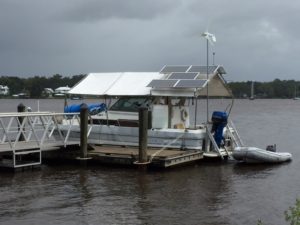
But Florida Statute 327.4109 says a vessel or a floating structure can’t anchor to “an unpermitted, unauthorized, or otherwise unlawful object that is on or affixed to the bottom of the waters of this state.”
Does this mean a boater can’t create his own structure on the river bed to anchor to as Barker described?
“That is correct – what you are describing would fit the description of an illegal mooring,” FWC’s Parker said via email, although it’s not clear what they’ll do about it.
The dock and walkway at Stinson Park sustained $18,000 in property damage from boats during Hurricane Irma, according to the city’s Parks and Recreation Department. One liveaboard vessel owner lashed his boat to the dock during the hurricane, which isn’t allowed under park rules. Several other boats broke free and hit the dock and bulkhead, although residents aren’t clear which of the boats caused the damage.
Unfortunately, residential docks aren’t covered by homeowners insurance.
That’s something the city might want to include in its calculations to establish a permanent mooring field in the river, as discussed in its Maritime Management Plan. A mooring field is a city-run area where, for a nominal fee, boaters can moor and access land for pump out, showers and shopping, among other amenities. St. Augustine is currently testing one in the Salt River in front of Lighthouse Landing. One key difference, though, is St. Augustine’s mooring field isn’t in a residential area.
Now in its final stages, the plan states establishing a mooring field in the Ortega River is a “[p]riority due to high boating traffic and safety issues.” The plan identifies the Ortega River because it’s already been “informally established over time by boaters … .”
But before boaters began anchoring in the river, it was long known as a safe place for Jacksonville kids and families to water ski because of its somewhat protected area, according to long-term residents. Now, boats scattered throughout the basin can create a navigation hazard for other users.
Photos of mooring fields around the state show areas dense with boats – far greater than exist anywhere in Jacksonville waters currently. How the city and state would monitor the field and protect private property given they haven’t been able to with a far smaller number of boats, so far is unclear.
Florida Field Notes will continue to follow up with law enforcement and the city for more information. (Disclosure: the author of the article lives in the area.)


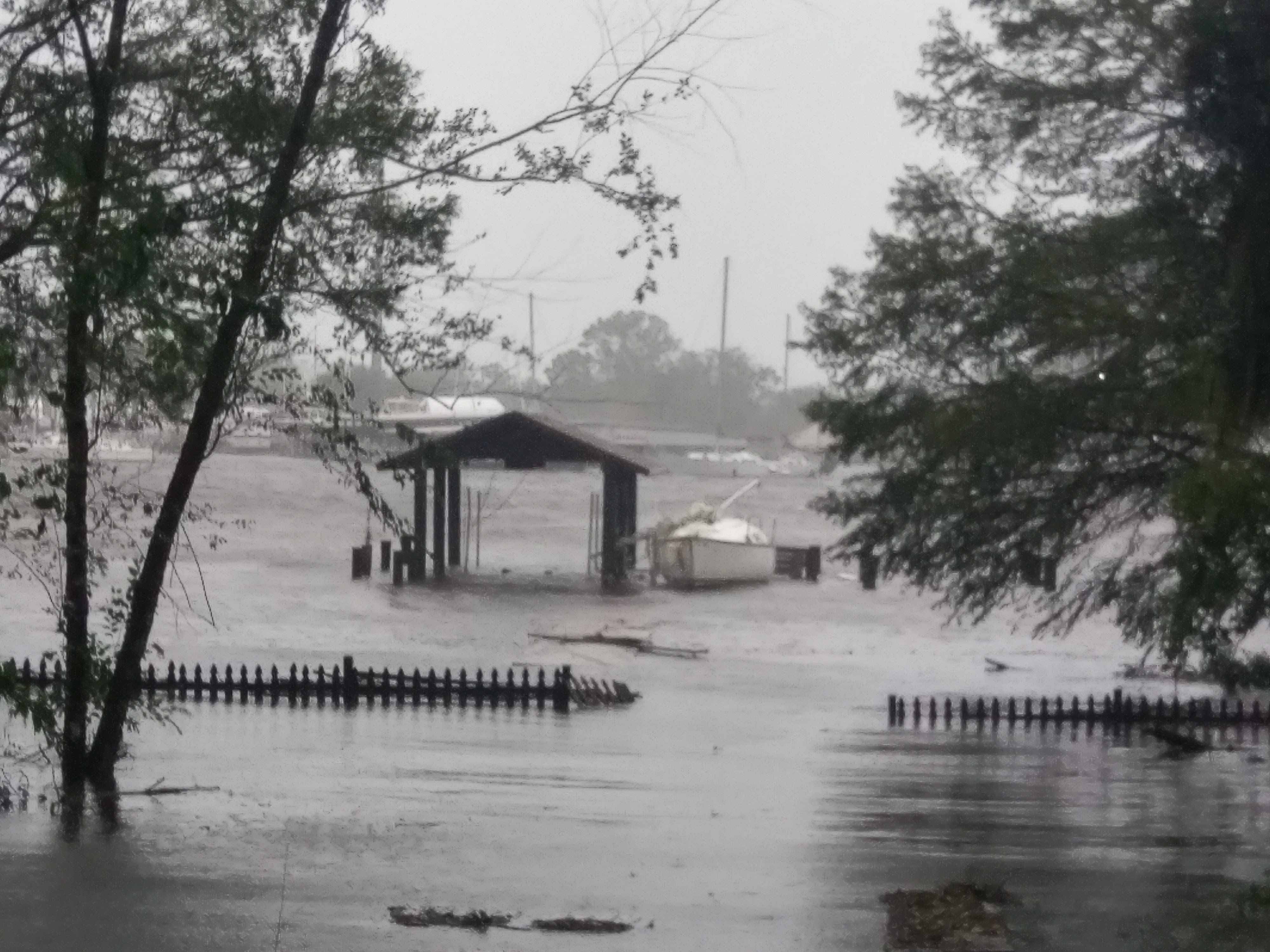
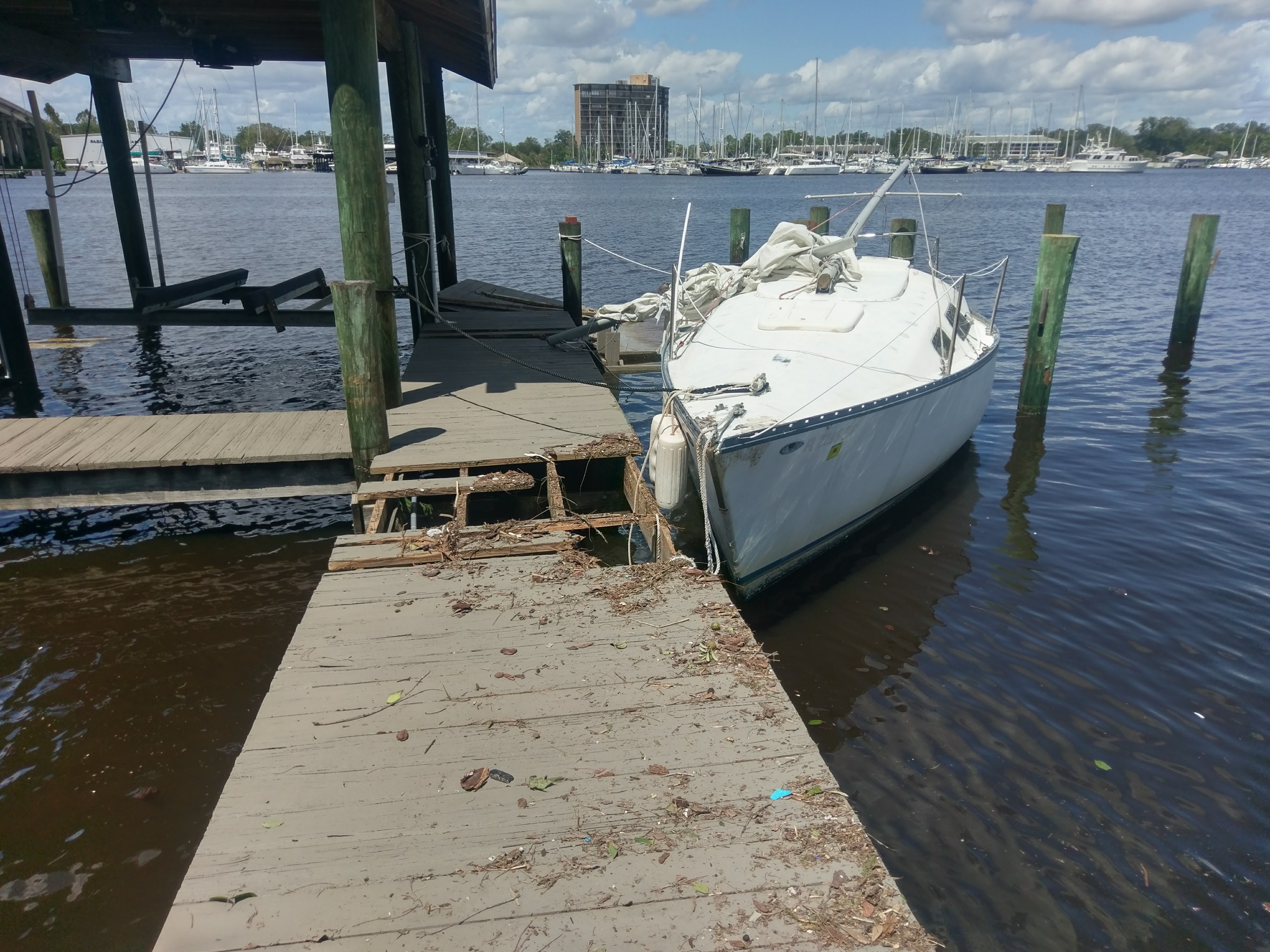
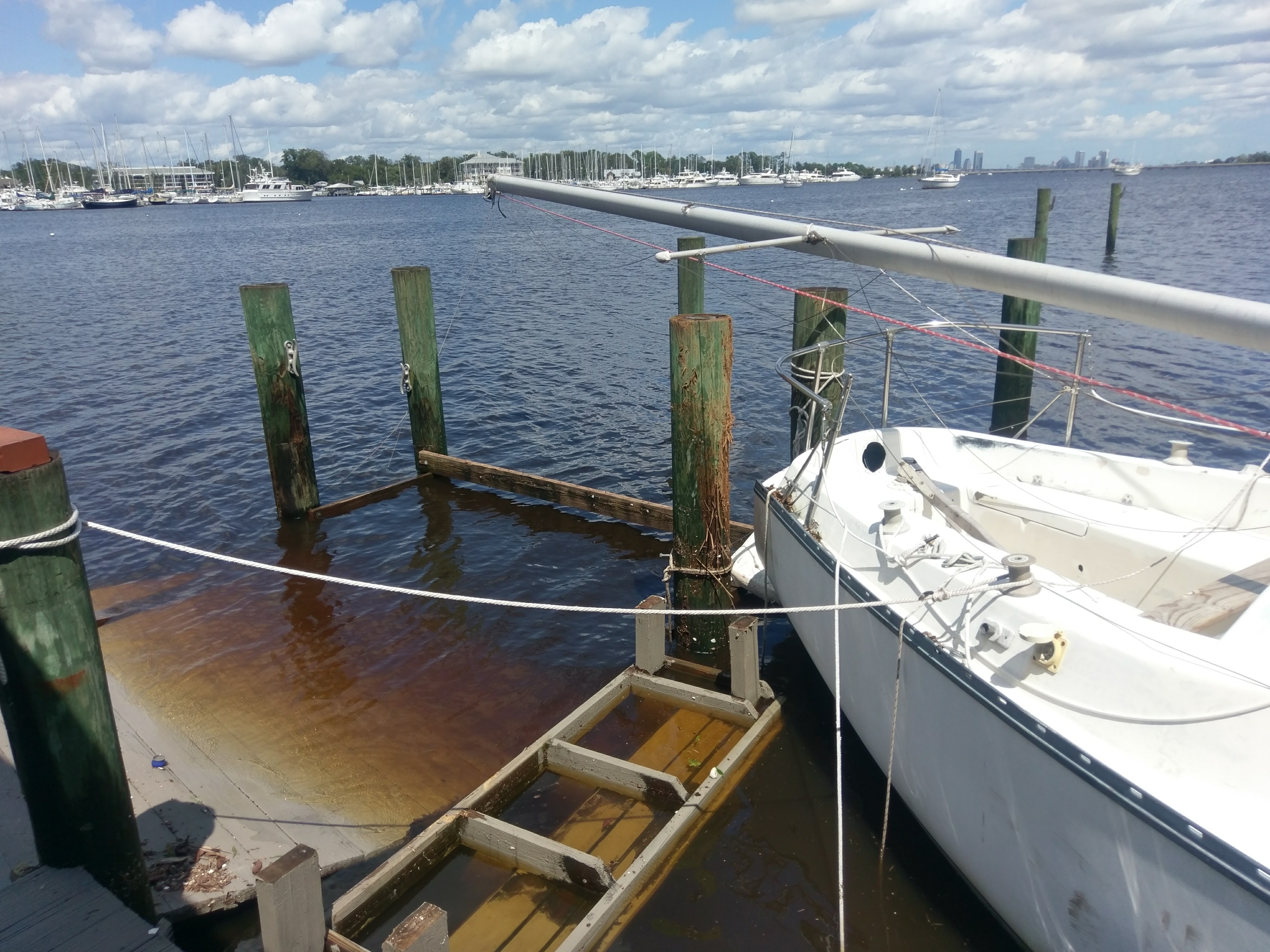
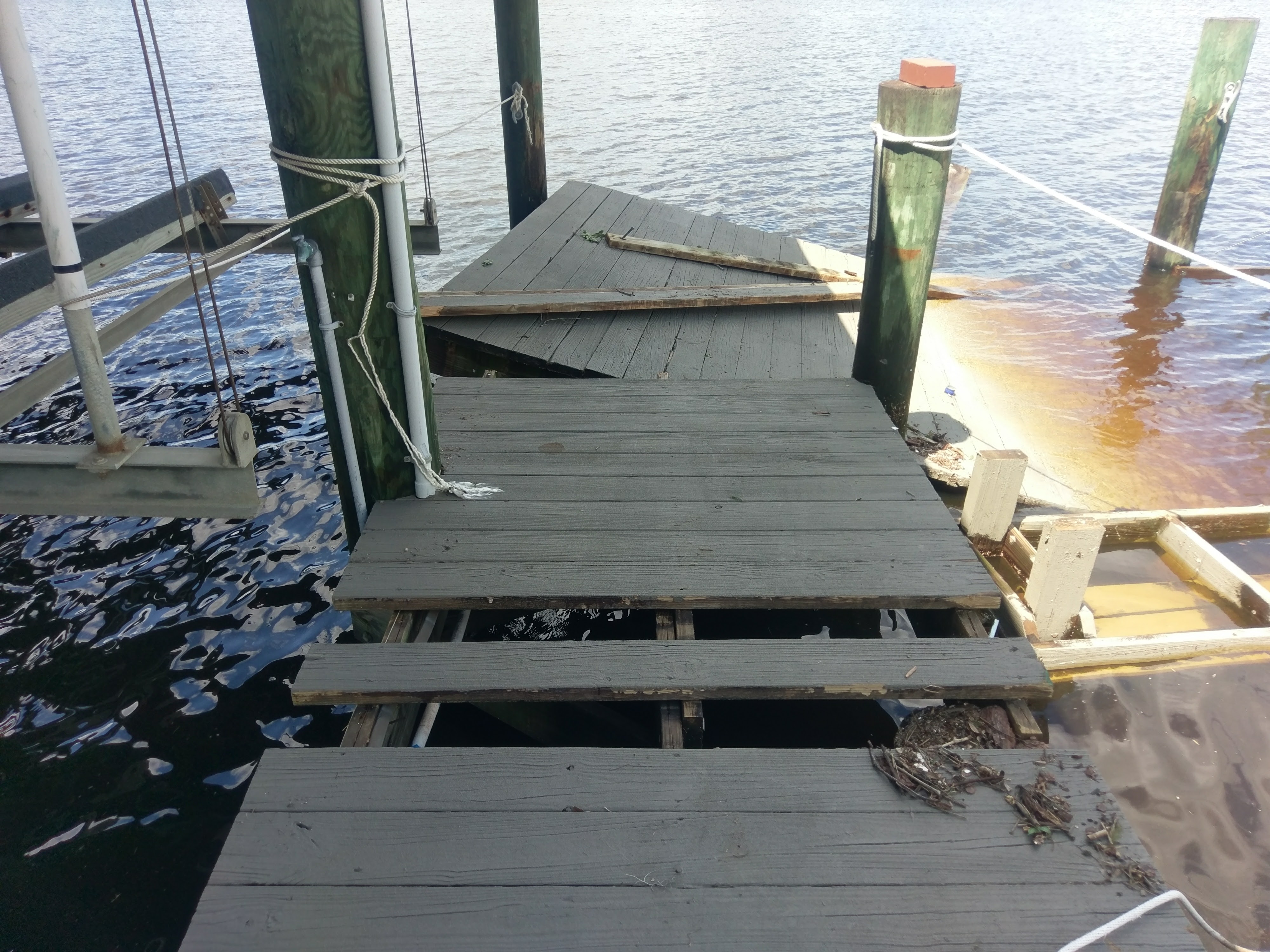
Leave a Reply